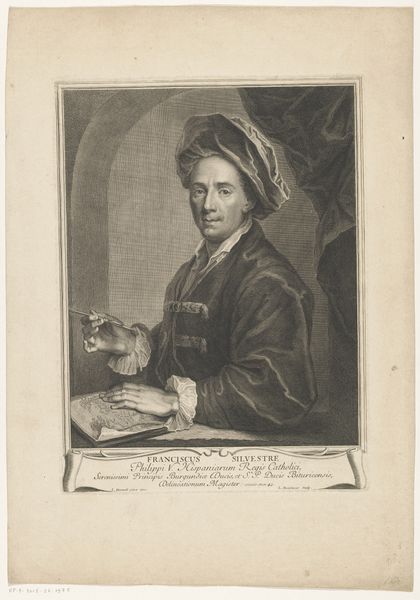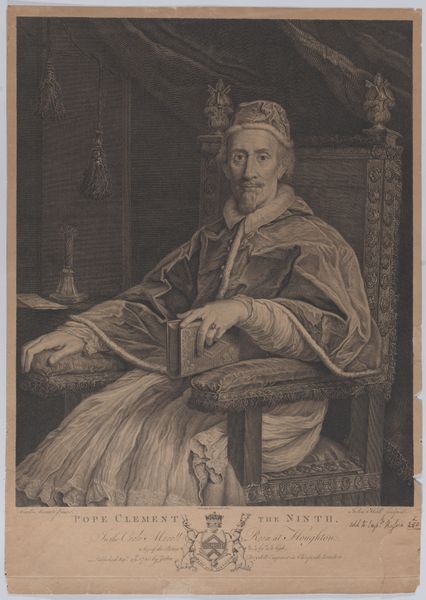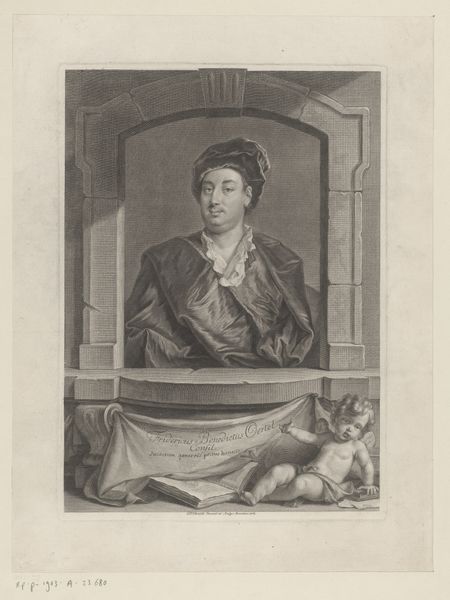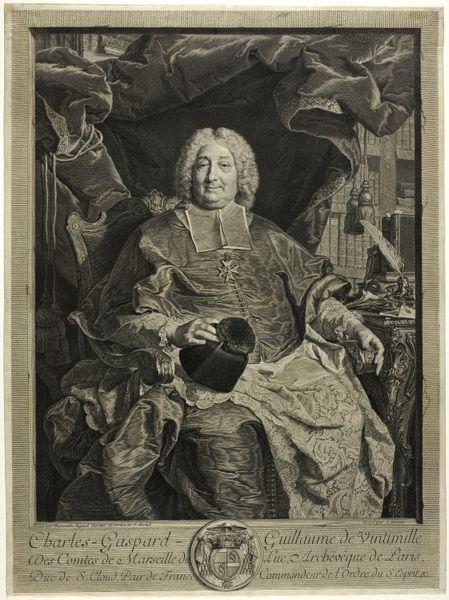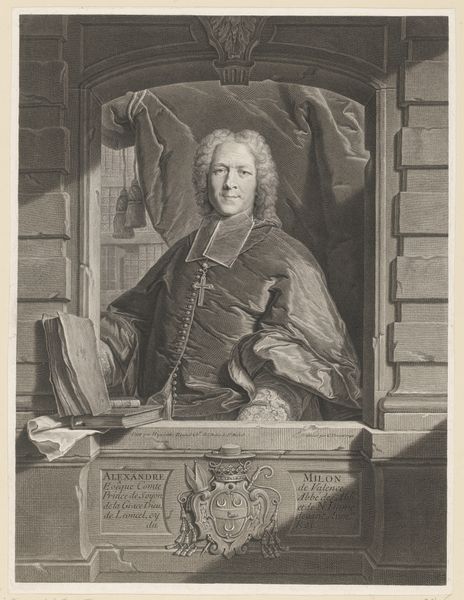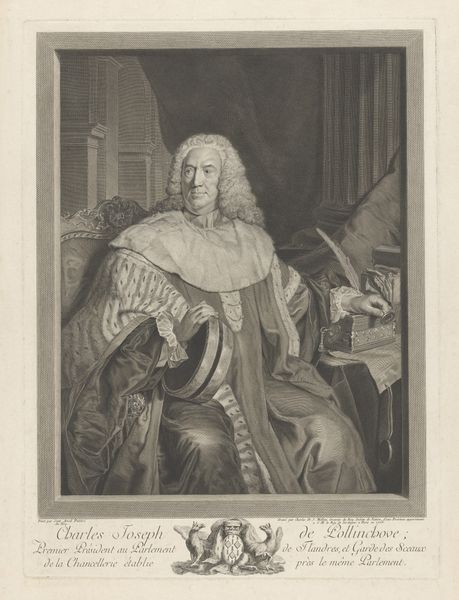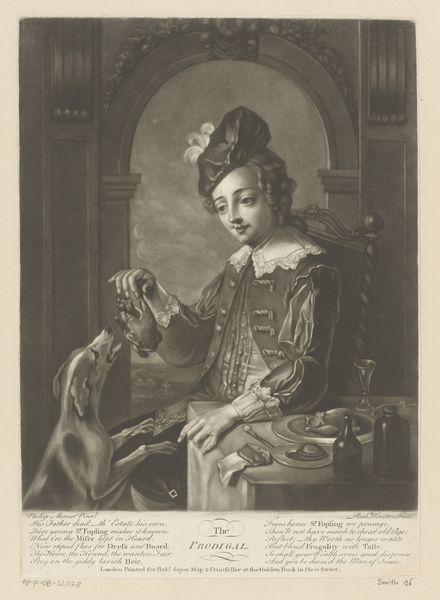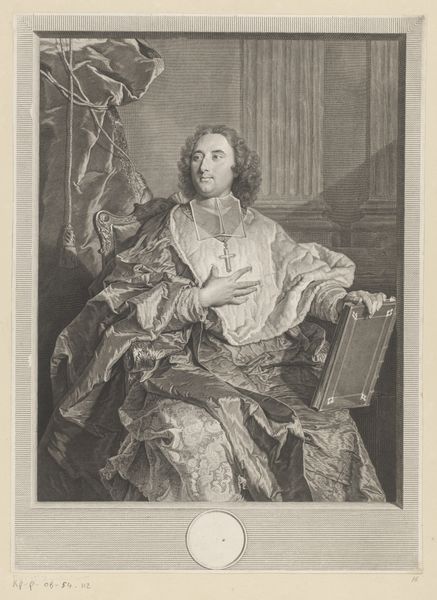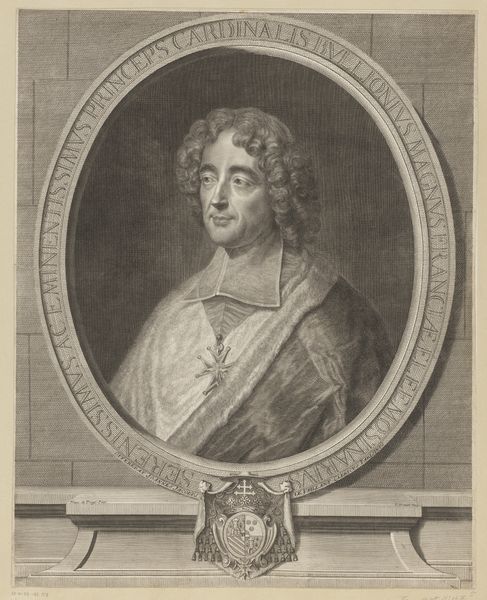
drawing, print, engraving
#
portrait
#
drawing
#
baroque
# print
#
charcoal drawing
#
portrait reference
#
pencil drawing
#
engraving
Dimensions: Sheet: 18 7/16 x 13 1/2 in. (46.9 x 34.3 cm) Image: 17 7/8 x 13 3/16 in. (45.4 x 33.5 cm)
Copyright: Public Domain
This is Pierre Drevet’s print of Hyacinthe Rigaud, made in the early 1700s using engraving. Drevet incised lines into a copper plate, forcing ink into these grooves to create the image. The remarkable thing about this print is the way Drevet uses the sharp, definite nature of the engraved line to mimic Rigaud's painterly style. Look closely, and you can see the meticulous labor involved. The varying density and direction of the lines create a sense of depth, volume, and texture. The face, drapery, and even the stone window frame all benefit from this illusion. The weave of the turban and the sheen of the sitter’s sleeve are particularly successful. Engraving had a strong commercial aspect, allowing images to be widely reproduced and disseminated. While Rigaud built his reputation on unique portraits for elite clients, Drevet made his name by democratizing access to those images. It's a fascinating intersection of labor, skill, and the burgeoning culture of image consumption. It shows how so-called fine art and craft were deeply connected.
Comments
No comments
Be the first to comment and join the conversation on the ultimate creative platform.


